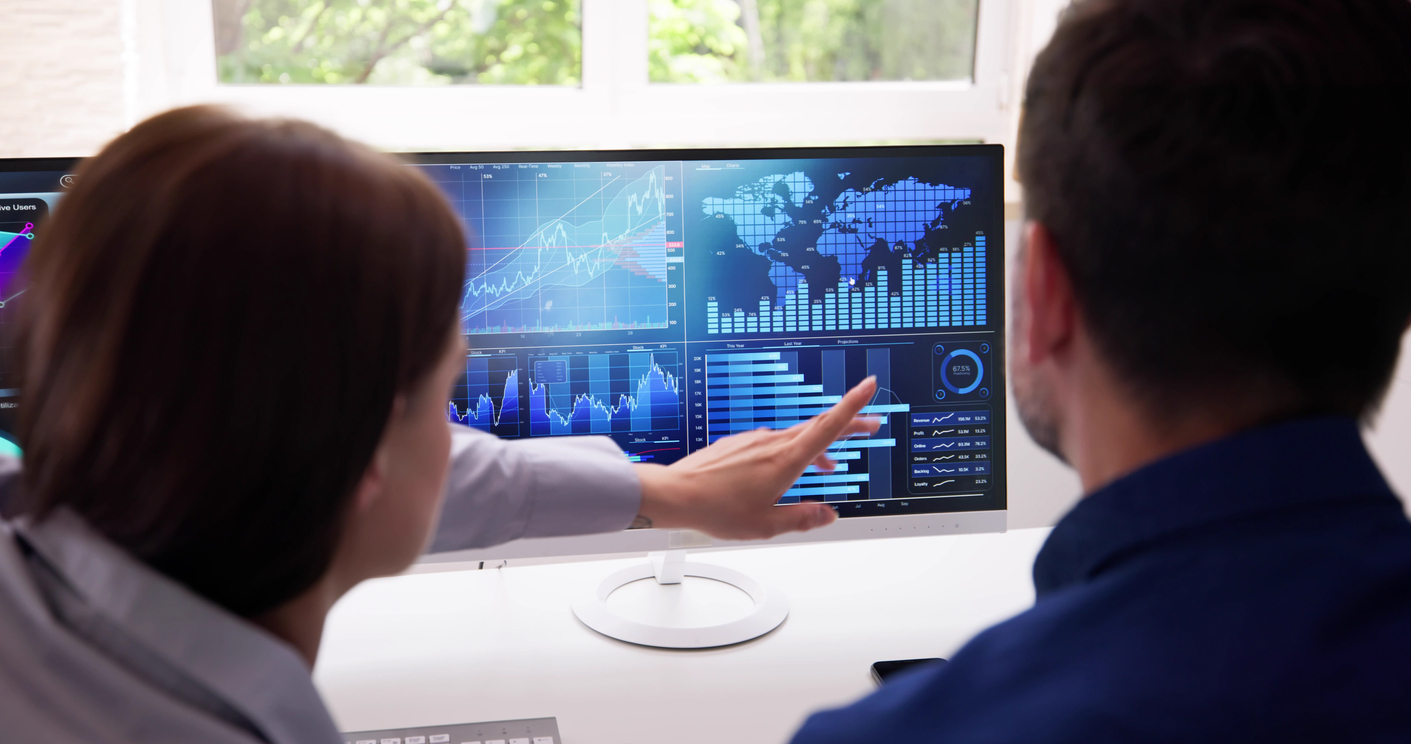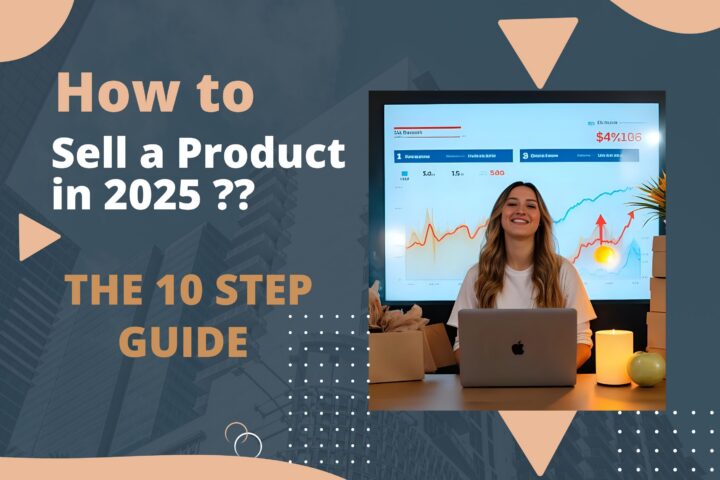Business intelligence consists of the strategies and technologies used by organizations to analyze data and manage information. Analytics is the analysis of computer data and statistics. Predictive analytics is used in many industries to forecast future outcomes and determine actions and decisions. Businesses identify patterns in customer behavior and consumer trends to improve products and services. Various industries use predictive analytics to understand customers and improve their operations, including healthcare, retail, cybersecurity and manufacturing.

Companies worldwide require experts in business intelligence, and people who are qualified in this field can have rewarding careers. Businesses use cases for predictive analytics to analyze data to determine future outcomes. Marymount University offers an online Doctorate of Business Administration in Business Intelligence, a part-time accelerated course. Graduates are equipped to apply predictive analytic tools and become business intelligence experts.
Business intelligence analysts are greatly valued by companies as the amount of data that they collect increases. The demand is predicted to rise in the future to meet the needs of companies.
As data collection grows, companies must employ experts to ensure that they benefit from new technology. Having a career in this field will mean playing a vital role in business decision-making and companies’ future success.
Data analytics is the process of data examination to answer questions, recognize trends and extract useful evidence. Companies use this information to formulate strategies and make effective business decisions. There are four types of data analytics: predictive, prescriptive, diagnostic and descriptive.
Predictive analytics addresses what might happen in the future. Predicting future trends and events is essential in business. Predictive analytics is used in many ways, from medical advancements to weather forecasts. Predictive analytics uses past data to anticipate possible situations that can influence strategic decision-making. Predictions could be for the immediate future, something that could happen that day, or the more distant future, such as the upcoming year.
Predictive analysis can be performed manually or by using machine learning algorithms. Regression analysis is a predictive analytics tool that finds the relationship between two variables or three or more variables. Mathematical equations show the variable relationships and can predict the outcome if one variable changes. Regression allows insights to be gained into the relationship structure and measures how well the data fits the relationship. These insights are valuable for analyzing past trends and creating forecasts.
Advanced technologies are used to analyze customer data and anticipate their next actions, needs and wants. Businesses can identify customer behavior and market trends to increase the effectiveness of a product or service. Collecting customer insights can create an alignment between customer needs and a company’s business goals. Data collection can allow businesses to determine why customers act as they do and understand their motivations.
Healthcare
Predictive analytics is making a difference in healthcare. By using data-determined insights and predictive models, healthcare organizations can identify potential problems, foresee patient needs and identify health trends more effectively than in previous times. Analytics allows healthcare professionals to predict health outcomes and distribute resources correspondingly, resulting in improved cost-effective care. These analytics also personalize treatment according to the patient’s genetic profile or medical history. Operational efficiency is improved by the prediction of resource needs and using early interventions to reduce readmissions. Predictive analytics is a valuable tool in healthcare, improving patient care and contributing to patient safety.
Predictive analytics is changing patient care, bringing an understanding of current challenges and potential outcomes. By using machine learning and data mining techniques, healthcare professionals can identify potential problems and risk factors, reducing any harm to the patient. Predictive modeling can significantly affect surgery, intensive care and emergency care, where quick reactions and decisions relate directly to patient outcomes.
Predictive analytics in healthcare involves the analysis of historical data to find trends and patterns that can predict future occurrences. They can predict the possibility of certain health conditions, trends, clinical decisions and the spread of disease. Healthcare professionals can make educated decisions about treatments and how to adapt them for patients. Predictive analytics can also help in recognizing patients who are at risk of relapse or complication and deliver interventions to make problems less likely. Physicians can diagnose diseases quickly and accurately, and hospitals can identify high-risk patients and predict resources needed.
Predictive analytics allows healthcare organizations to use data and resources to provide the best possible patient care. Patient outcomes are improved, and patient and provider costs are reduced. Electronic health records can give health data about patients who are most likely to miss appointments. Providers can use this data from healthcare predictive analytics to send frequent reminders to these patients and offer additional services such as transportation. Healthcare organizations use predictive analytics for better diagnosis, reduced healthcare costs and improved patient care. This technology can identify trends and patterns to predict future needs and health outcomes.
Predictive analytics can be a valuable tool in the intensive care unit, where interventions before deterioration occurs can save lives. Patients’ vital signs are continually monitored and analyzed, and predictive algorithms can recognize which patients need intervention within the next hour. Healthcare staff can provide care based on small signs of patient deterioration. Predictive analytics can estimate the probability of a patient’s death or readmission after discharge. Predictive analytics can also identify warning signs of an adverse event in a general ward, allowing staff to alert the rapid response team.
Retail
Retail predictive analytics involves collecting data on operations to gain greater insight into customers, make effective decisions and improve the business. It uses historical data to predict future retail operations and helps anticipate and understand customer behavior. It can predict future sales and whether marketing ideas are likely to be successful. Businesses keep financial records and can use predictive analytics to forecast financial health. Historical data from past financial statements and data from the broader industry can enable the projection of revenue, sales and expenses, creating a view of the future and supporting decision-making.
In marketing, there is a lot of consumer data, and it can be used to create advertisements, content and strategies that are more likely to reach potential customers. Predictive analytics uses past behavioral data to predict what will happen in the future. It is applied to forecast sales trends at different times of the year and relates this to campaign planning. Past behavioral data can help predict if a customer is likely to make a purchase. A single linear regression model can give the knowledge needed to plan targeted advertisements at different points of the customer journey.
Retail businesses need to be able to predict what customers will buy and when. The better a business knows its customers, the more it can meet their needs. Predictive analytics can help businesses know what is coming and how to improve performance. It runs off data, and some data is not automatically available. Businesses may need to direct their efforts to collect valuable data, such as through customer surveys. Data has to be summarized and presented to be accessible to company decision makers. Current and historical data can be used to generate useful forecasts that identify patterns and the direction of key metrics.
Data can be tracked from customer interaction with the brand and its products. This could be tracking how customers move through a store, how they use the website, and what reviews are left. This kind of data can help make improvements to the service. Analytics is being used when a website makes suggestions for what a customer might like to buy. Recommendation engines can use the data from detailed customer transaction histories to find specific transaction patterns and make personalized recommendations. Market basket analysis is a technique that predicts what the customer might want according to items that are often bought together.
Retail predictive analytics uses revenue projections, which are useful for planning purposes. The simplest prediction uses current and past data, which can be enhanced by breaking it down to product type, store and more. Demand forecasting looks at business sales. Methods used include identifying patterns, running regression analyses, getting expert opinions and conducting customer surveys. Demand forecasts give an idea of what operations will need, leading to better supply chain planning and inventory management. One of the most valuable services from predictive analytics is understanding customer behavior. Data analytics will often give insights into customer behavior that could be discovered by asking them questions, such as in a survey. Retail analytics can help to improve the customer experience.
Cybersecurity
Predictive analytics helps companies recognize security threats before they cause damage. Developing predictive analytical approaches to cyber has become interwoven with machine learning. These analytics help in the detection of future incidents and improve prevention. Cyber threats are often identified too late, which is a significant problem for organizations. Attacks are often identified in their later phases or when they are completed. If an attack is detected during the early phases, it gives businesses time to secure their information.
Predictive analytics can ensure cybersecurity for an entire system. Companies can use predictive analysis to find the weaknesses in a system before they are damaging. All of the business applications provide data that can be analyzed to find out what needs to be modified or optimized to make the system stronger. Predictive analysis of big data can identify the source point of attacks before they become threats. An advanced level of cybersecurity is needed because hackers are becoming more complex. Predictive analytics and hybridized bots that mimic human behavior can help to identify system irregularities by using self-analysis tools with monitoring services. They monitor the pattern in different processes and the performance and health of different applications. An understanding of the threats to network activity is developed and solutions are proposed. Security processes must be continually modified, and operations teams can protect sensitive data.
Cyber threats are becoming more sophisticated and greater in volume. Organizations need to fight back against these risks, and skilled professionals are required to do this. Predictive analytics and big data can contribute to cyber defense by transforming large amounts of data into competitive intelligence. Predictive indicators can recognize emergent risks before they cause significant loss.
Data anomalies can be detected early on finding new patterns of data access, such as data that is being encrypted to avoid detection. By finding unusual patterns, predictive analytics can reduce the risk to a company by removing it from the network.
Risks are evaluated and ranked according to importance. If the analytics engine identifies suspicious behavior, it alerts the right people, ranking it as low to high risk. Businesses must consider known and emergent risks when developing a cyber defense program. Companies need to focus on emergent risks and the defense against them. These algorithms analyze data, such as user behavior, system configurations and network logs, to develop models that predict future cyber threats. With constant analysis and monitoring of data, organizations can find actionable insights and be warned about potential attacks.
Cybersecurity teams can benefit from this proactive approach by responding quickly to emerging threats, implementing preventive measures and allocating resources more efficiently. Predictive analytics also provides precise predictions about the severity of potential security incidents so that organizations can plan their response strategies.
Manufacturing
Predictive analytics is used in manufacturing to inform predictive maintenance and other industrial applications. Predictive maintenance is a primary use case for predictive analytics. Industrial sensors are used to record data on manufacturing equipment performance, and analytics modeling identifies small changes in performance that could indicate potential maintenance problems. These issues can be addressed before equipment shutdowns or malfunctions. Risk analysis, using
broader analytical modeling, can detect maintenance issues early and high-risk areas that may need maintenance.
Staff are the most essential and valuable resource in a manufacturing business. Predictive analytics can help in difficult areas, such as filling positions and keeping staff. Predictive analytics can assist in creating a more effective workforce and performance tracking. As well as using predictive analytics to determine actions on likely situations, it is also possible to use it to prevent unwanted situations from happening. In manufacturing, algorithms can be used to predict when machinery will malfunction. The algorithm can warn employees when a malfunction is imminent, and it can stop the machine, saving the company money in damaged products and repair costs. Algorithms can also recommend repairs to prevent malfunctions, improve efficiency and save money – a type of prescriptive analytics. When equipment cannot be used, it is costly for the company and negatively effects production. Predictive maintenance enables more control over equipment, with maintenance scheduled for times when production will be impacted the least.
Manufacturing products can be a long and complex process. Managers have to source raw materials, manage machinery and understand changes in demand. Predictive analytics can provide demand forecasting, foresee raw material delivery, and predict machine maintenance so that operations are efficient and time and cost are saved. Manufacturing equipment is very well used, which can lead to breakdowns. This can be an expense to manufacturers with lost production and quality issues. Predictive analytics can monitor and track machinery using sensor data, and future breakdowns can be predicted. Some of the insights provided will be when a machine is not performing well, when components need replacing, and when a failure is likely to happen. Analytics can minimize maintenance costs and machine downtime. Automated maintenance requests can be generated and recommendations made to improve efficiency.
Demand forecast enables manufacturers to provide customers with what they want at the right time. Predictive analytics allow manufacturers to collect the right data and recognize patterns, trends and existing gaps. Predictive analytics can identify unknown factors that affect demand, allowing better inventory management. Manufacturers can produce the predicted number of products, maximizing revenue and avoiding loss due to out-of-stock products. This approach saves valuable time and resources.
Analytics can help with workforce management by giving insights into employment, training and workforce efficiency. It can be used to determine which staff are needed at certain times. Too many staff is not cost-effective, whereas too few staff is bad for production, employee morale, and can result in costly errors. Predicting customer demand and potential machine malfunction can help in deciding staffing needs. There can also be an understanding of which factors affect staff efficiency, such as machine efficiency and safety incidents.
Predictive analytics can also be used to enhance workplace health and staff safety. Staff can avoid potential incidents, improving workplace health and safety. Analytics can contribute to output and product quality. It can flag up potential quality problems to avoid any production loss. Over time, the customer experience and brand quality are enhanced.
The place for predictive analytics
Business intelligence benefits organizations by allowing them to analyze data and manage information. The benefits are being seen across businesses that can detect problems early on, recognize consumer trends and see business growth. Predictive analytics is being used to forecast outcomes and drive actions and decisions. Many industries utilize predictive analytics, including healthcare, retail, cybersecurity and manufacturing. Highly qualified professionals with expertise in predictive analytics are in demand by employers and organizations.









